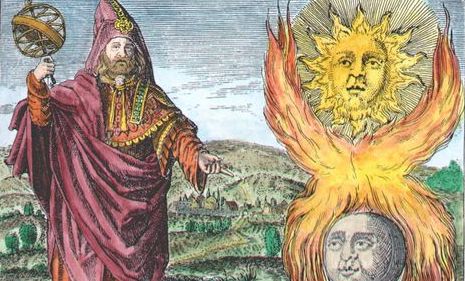Taoism is one of the lesser known philosophies of the East. Buddhism and Hinduism are much better know, mostly because of the mainstreaming of Yoga and public figures like the Dali Lama. Taoism remains this rather obscure and mysterious philosophy anchored in the mountains of China. Of all the Eastern philosophies, it is the most alien to us.
Despite their comparative obscurity, the ideas of Taoism are remarkably similar to the earliest philosophies of the West. Go back far enough in time, past some of the greats like Plato and Socrates, and the threads of a similar philosophy start to appear. Indeed the man who is credited with inventing philosophy itself, Parmenides, is the major proponent of these ideas.
What Parmenides was saying, back in 600 BC, was that the world was ruled by two major forces; the forces of attraction and the force of repulsion, the force of Love and the power of Strife. Love draws together the elements, mixing them and creating new ones in an endlessly creative process. Strife on the other hand separates these same elements, returning them to their isolated but pure constituent parts. These forces were embodied in the Goddesses Aphrodite and Persephone, the Goddess of Love and the Goddess of Death. And he, Parmenides, was on the side of Death.
In terms strikingly reminiscent of the Taoist alchemist, he talks of Death, or Strife, as being the power that purifies, the power which separates the elements into their purest essence. Similarly, Taoist alchemy is dedicated to the idea of finding the purest possible elements, leading the alchemist to the powers of creation, to the purest expression of Yin and Yang. And it does so by fire and reduction, by burning away what is un-pure and mixed.
In his writings Parmenides goes one step further and reminds us that ultimately both Aphrodite and Persephone are two sides of the same coin, that each engender the other. Strife leads to a state of purity which is devoid of life, and therefore collapses onto itself, traveling back towards Love, towards a new mixing of all things. But Chaos emerges out of Love because of its promiscuous bonding, which then collapses upon itself, engendering a move towards separation, towards Strife. A perfect cycle of balanced forces, exactly like the Taiji. And again like Taoism, Parmenides hints at the singular Universe, the Wuji of the Taoists, within which the forces of Love and Strife generate life.
As Peter Kingsley says in his “In the Dark Places of Wisdom” ( pg 125) : “Each single thing that exists is being reduced to a small part of the pattern created by the interplay of night and day, of light and darkness. For those are the fundamental opposites that, as Parmenides will explain later on, repeat themselves endlessly in different combinations to produce the Universe we think we live in.” You can’t get much more Taoist than that.
Even more interesting is the concept of metis which is central to Parmenides’ approach to life. The word loosely translates as “wisdom”, but it points more to the ability to pay attention to the moment, and act accordingly. It is symbolically tied to the chariot racer, able to weave through his competitors while traveling at high speed. The mindset of the chariot driver is the mindset we are supposed to bring to life. This metis is closely related to the Chinese Ji, which also has the dual meaning or “wisdom” and “acting at the right moment with the right action”. Ji, like metis, is a core value in a Taoist’s well-lived life. Both words point towards an attention to the present, which is also the core idea behind meditation.
This link between Taoism and ancient Greek philosophy goes both ways. In the Tao Te Ching we find:
“The valley spirit, undying
is called the Mystic Female
The gate of the Mystic Female
is called the root of Heaven and Earth”
Verse 6
Here we have the Mystic Female paired with the Earth, just as Aphrodite is the female personification of Earth itself (Aphrodite is not just the Goddess of Love. She is the Goddess of creation, the Earth Mother).
The connections continue in time and space. We can jump to Egypt and to the God Thoth, later known as Hermes Trismegistus, the fountainhead of the Western esoteric tradition, better known as Hermeticism. This tradition is first documented in 200BC in the writing of an Egyptian alchemist and initiate in the Mysteries (an esoteric religious cult).
Hermeticism has had an incredible impact on the West. It is the source of most (if not all) of the scientific traditions we still enjoy today, including medicine, anatomy, chemistry (through alchemy), and the study of natural laws which lead to physics. But Hermeticism was also a philosophy which believed in an ensouled Universe, and a force reaching through to everything. We read in “The Emerald Tablet”, a text dating back at least to the 2nd Century AD:
What is above, is equal to what is below,
And such that is below, is equal to what is above,
To penetrate the wonders of the One;
And so as all things originate from the One,
By conquest of the One,
So all things were created by adaptation of the One
….
It rises from the Earth to the Heaven,
And descends back to Earth,
And receives the energy of all energies
Which will control every volatile substance
And which will penetrate all solid matter.
….
Also, we read in Asclepius, another Hermetic text:
“…humans think things show great differences, since human observes them separately. But if human observes the connection between them, they are actually one.”
Again, this is a profoundly Taoist idea.

